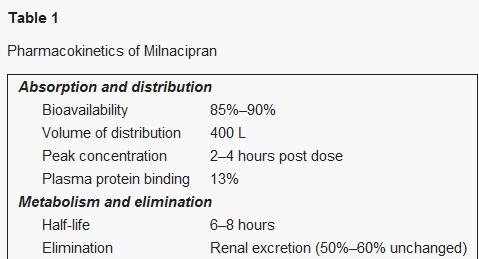A total of 100 mg/day is given in divided doses. The recommended dose-titration schedule for milnacipran is:
The manufacturer recommends an initial dose of 12.5 mg/day given once daily on day 1. On days 2 and 3, the dose should be increased to 25 mg/day, taken as 12.5 mg twice daily. On days 4 to 7, the dose should be further increased to 50 mg/day, taken in divided doses of 25 mg twice daily. After day 7, the dose should reach 100 mg/day, taken as 50 mg twice daily. The dose may be increased to reach 200 mg/day, given as 100 mg twice daily; however, doses should not exceed 200 mg/day because of the lack of evidence for the drug’s efficacy and because of an increased risk of AEs.
Buy hydrocortisone cream online
Dose adjustments should be made for each patient. As commonly seen with other SNRIs, tapering of the dose is needed when the drug is discontinued. Patients should not stop milnacipran therapy abruptly because of the potential for the development of withdrawal symptoms.
Renal Insufficiency
No dose adjustments are needed for patients with mild renal impairment (a creatinine clearance [CrCl] of 50–80 mL/minute); caution should be applied in patients with moderate renal impairment (CrCl, 30–49 mL/minute). For patients with severe renal insufficiency (CrCl, 5–29 mL/minute), the maintenance dose should be reduced by 50% to 50 mg/day in divided doses of 25 mg twice daily. Milnacipran should not be prescribed for patients with end-stage renal disease.
Hepatic Insufficiency
No dosage adjustments are necessary for patients with hepatic impairment; however, caution should be taken in this patient population.
Elderly Patients
In the phase 3 studies of the safety and efficacy of milnacipran for treating FM, no overall differences were observed in patients 60 years of age or older in comparison with younger patients. Specific trials involving milnacipran for geriatric patients with FM have not been published, although safety has been analyzed in older patients with depression. In a study comparing milnacipran with imipramine (Tofranil, Malinckrodt), milnacipran was associated with lower withdrawal rates and fewer AEs (except for nausea) in patients 65 years of age and older. Although there were fewer AEs in the milnacipran group, dry mouth was the only statistically more frequent AE seen with imipramine.
Pregnant and Lactating Women
Milnacipran has been designated as a Pregnancy Category C agent, implying positive fetal risks in animal studies, but studies involving humans are lacking. The manufacturer states that no adequate or well-controlled studies have been reported for pregnant women. Milnacipran should be used during pregnancy only if the potential benefits justify the potential risks to the fetus.
Controlled studies of milnacipran have not been performed in nursing mothers. Milnacipran is excreted in animals, and simultaneous nursing is therefore not recommended.
Pediatric Populations
Savella fibromyalgia
No controlled studies involving milnacipran for FM have included patients younger than 17 years of age. Consequently, the drug’s safety and efficacy have not been established in this patient population.
